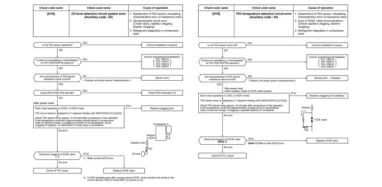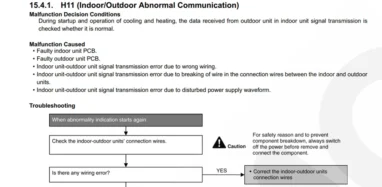If you talk to a professional or expert on HVAC systems, you will get to know that there are a lot of things that are completely unfamiliar to you. There is no harm in it if you don’t know about some aspects of HVAC systems but if you want to take care of your system in the most appropriate manner, knowing every single concept of HVAC is necessary. While looking for such aspects, you may ask, what is head pressure HVAC?
Well, head pressure in an HVAC system is the amount of pressure that is generated by the gas compressor of your HVAC system. It is a normal phenomenon and doesn’t bring any harm unless it exceeds the normal range. Move on with this article as it is solely composed to provide you with all the useful information about this very topic.
What is high head pressure HVAC
There is a normal range of head pressure in all HVAC systems but when HVAC tends to generate more pressure from the gas compressor than its normal range, the term used for such factors is known as high head pressure.
Head pressure is generated from the output side of the compressor and if the head pressure is extremely high, it can cause major damages to the system especially if it is combined with low suction pressure. It is a clear indication of refrigerant restriction in the HVAC system.
What is high head pressure for 410a
Various experts and professionals claim that head pressure for a 410A system should be 400 to 418 PSIG on the high side while 120 to 130 PSI on the lower side. Anything more than this range is considered high head pressure. This value may vary a little bit depending on the weather and other external conditions.
What causes high head pressure HVAC
There are various causes of high head pressure in HVAC but a few most common, major, and prominent ones are briefly discussed below.
Dirty or clogged condenser coil:
One of the major and most common causes that lead to high head pressure is the build-up of dust and debris in any part of the HVAC system, especially around the evaporator and compressor. A dirty or clogged condensing coil is often a cause whenever you notice high head pressure.
Malfunction condenser fan:
The insufficient condensing effect could be a cause as it does not allow the system to keep the pressure at a normal stage. Condensing effects can easily be affected if the condenser fan is either not working or has been slowed gradually.
Refrigerant leakage:
Refrigerant leaks in HVAC systems can directly cause high head pressure in no time. If this is the actual cause, it is recommended to take professional help immediately to prevent your system from major issues or a complete breakdown.
Wrong or Improper Installation:
This is not so common cause but can happen if you take services from an inexperienced technician or work on your system as a DIY project. Installing in the wrong way can lead to some non-condensing gases or you may equip components in wrong paths that will have their consequences and high head pressure is one of them.
Is head pressure determined by condensing temperature range
Although head pressure in HVAC systems is controlled or adjusted by changing the speed of the condenser’s fans, it can also be determined by condensing temperature range.
If the ambient temperature is too close to the design condition and the amperage of the composer motor is too high, it will increase the head pressure as the system is working in extreme conditions. This thing usually happens during the hot summer days.
You can get an idea by the fact that almost all HVAC systems are manufactured to deal with 950F of ambient temperature. If the ambient temperature is way more, even a little bit higher than this range, it will lead to high head pressure especially if it is combined with humidity or moisture.
High head pressure symptoms
- Increase in the evaporator flash gas.
- A bit of an increase in suction pressure.
- Fluttering pressure on the suction side.
- Noise can also increase during high head pressure.
- Leakage at condenser piping, evaporator thin aluminum, etc.
- Cooling may also become faulty.
- Long-term symptoms may include an increase in utility bills and energy wastage.
How to check head pressure HVAC
- Hook up the digital refrigerant gauges to your HVAC system.
- Put a thermostat whose sensing bulb should be at a distance of 6” from the condenser coil.
- Record and note the temperature as this will be the ambient temperature of HVAC.
- Scroll down in the digital gauge settings and select the “Saturation Temperature” option.
- Here they will display the temperature of refrigerants inside the condenser coil.
- This is the value of head pressure in HVAC.
The head pressure should be in the range of 20 to 30 degrees above the ambient temperature. Out of this range will indicate the low or high head pressure in your HVAC system.
How to calculate head pressure HVAC
- You only need the ambient outside temperature of your HVAC to calculate its head pressure.
- Simply take the normal range of head pressure for your specific type of HVAC and add it to the ambient temperature. Once you have the resultant value derived, compare it on the gauge to see how much psi of head pressure is at that point.
- For example, old HVAC systems may have 35 degrees normal range (new systems usually have 20 degrees) and we suppose 80 degrees an ambient temperature. Adding these will give us:
- Ambient Temperature + 35 = 115
How to fix high head pressure in HVAC
- The first thing you can do is to check the condenser fan and fix it if it is running slow or has been stopped completely.
- Remove all the dust and debris from the system especially near the compressor, evaporator, and condenser coils.
- Test if the refrigerants are in the right amount and if they are the issues, you may need to take professional help to tackle it.
More resources:


